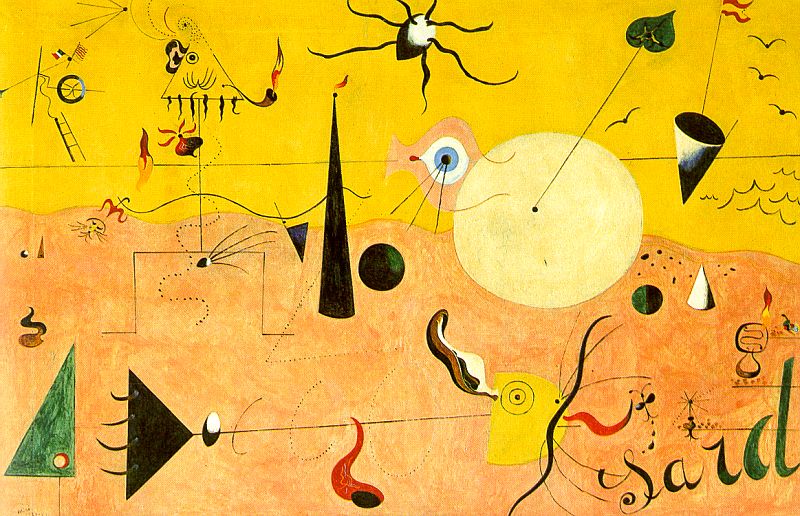November 07, 2004
illuminating eye
In fact, in 1941, with the rise of abstract expression in the US surrealism was declared dead, and it has been described as such in all art history books since that time. The US embraced the view of abstract artists that the chaos of action painting and automatism were expressions of freedom.
In Australia surrealism was deeply felt in the 1940s to the extent that we can talk in terms of Australian surrealism.
This silencing is a shame because visual representation of the object was called into question by the surrealists, then re-instated. It --as the eye--became part of the uncanny logic of the unconscious.

Joan Miro, Catalan Landscape:The Hunter, 1923-24.
The turn to using the form of children's art was a way to recapture the freshness of vision. Children's art was valued for its naive spontaneity and celebration of the moment, imaginative use of visual language, and its universality and candor.
That has to do with the American taste formers smacking the figurative painters upside da bonce in favour of abstraction.
Didn't work. Surrealism never died. Ultimately it is a circular journey.
While the expressionists journeyed outside the head into the world, they end up with the human psyche; the surrealists went the other way and ended up with the world. Inescapable. The Unconscious is both about reality and reality itself.
Same for formalists. Those abstractions take us back to how we see the world - the ultimate naturalism about the nature of perception, which is in itself internal. The figurative painters end up driven by form because that is perception itself.
Go watch a vampire movie.
Cripes.. there's a quick splash in some twisted ideas in a moment on the way to lunch.
Posted by: David Tiley on November 11, 2004 11:22 AM